7 Visionary Women Who Paved The Way For Electronic Music Part 1
1) DELIA DERBYSHIRE
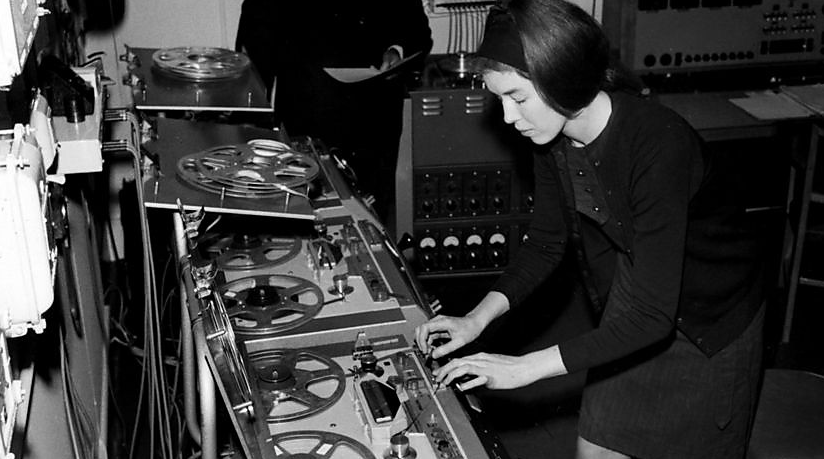
First we pay tribute to ‘Sculptress of Sound’ Delia Derbyshire. The ‘woman behind the wobbulator’ once approached Decca Recording Studios in London, only for them to tell her unequivocally that they did not employ women in their recording studios. Despite various companies knocking her back, she continued to pursue her passion, and in 1960 she landed an opportunity with the BBC as a trainee assistant studio manager.
A senior studio executive, Desmond Briscoe, soon realised the tall, quiet, auburn-haired Delia was not only enthusiastic, but enormously creative and talented. He invited her to join their experimental and innovative Radiophonic Workshop in 1962, where she was to stay for over ten years.
One of her first assignments was to realise one of the first electronic signatures ever used on television: Ron Grainer's score for the new science fiction series, Dr. Who. Delia, and her engineer, Dick Mills, had to create each sound from scratch; they were on the cutting edge, though Delia had no way of knowing how influential her work at the Radiophonic Workshop would become.
2) SUZANNE CIANI

An accomplished pianist, Suzanne composed scores for adverts—Coca-Cola and General Electric being among her clients—using a Buchla Analog Modular Synthesiser (which she bought with money earned working in Buchla's factory). Though best-loved for her original music and diverse soundscapes, her speciality was reproducing sound effects on the synthesiser that, prior to her work, engineers had difficulty recording properly.
The sound of a bottle of Coke being opened and poured, used in a series of radio and television commercials in the late 1970s, is one of Ciani's most widely recognized works. She soon found her sound effects to be in high demand. The pinball game ‘Xenon’ featured her voice and, in 1977, Ciani provided the sound effects for Meco's platinum-certified disco version of the Star Wars soundtrack.
In the early eighties, Ciani began to record New Age works which hybridised electronic and traditional instruments, and later she founded her own music label called Seventh Wave.
3) DAPHNE ORAM
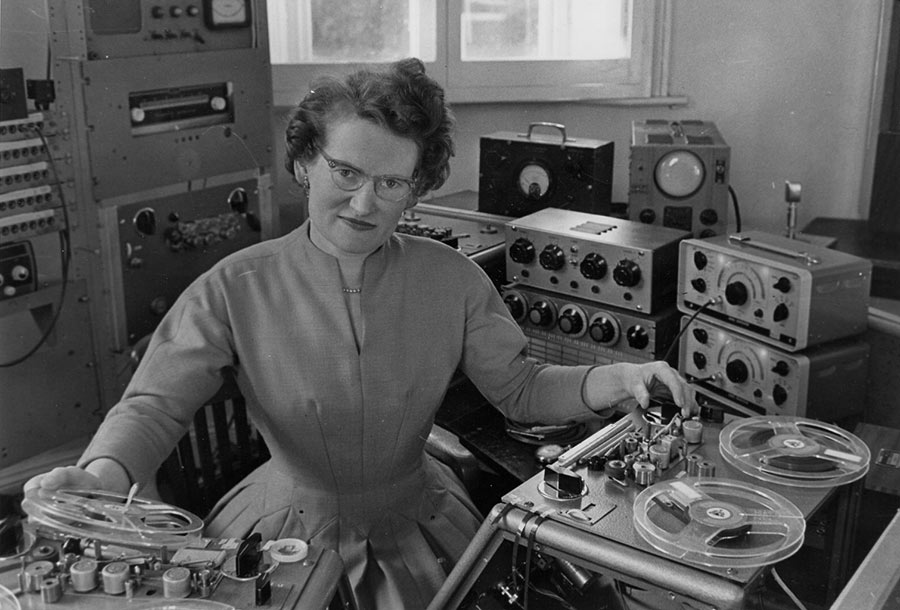
Though Daphne Oram was offered a place at the Royal College of Music, she instead chose to take up a position as a Junior Studio Engineer at the BBC. Here she began to experiment with tape recorders and explore the possibilities of synthetic sound. Following a trip to RTF studios in the 1950s, Oram campaigned for the BBC to provide electronic music facilities for use in its programming. This led her to set up the famous Radiophonic Workshop. A year later she opened ‘Oramics Studios for Electronic Composition’ in a building once used for drying oat near Kent.
In February 1962, Daphne won a large grant to support development of her Oramics machine. Making use of a new technique—best described as ‘drawn sound—this device allowed composers to draw an ‘alphabet of symbols’ on 8mm film and feed it through a machine to produce sounds on magnetic tape. Similar to the way we currently draw beats and manipulate sounds in software, this was the dawn of a visual, hands-on approach to electronic music making.
Here’s a virtual version of the machine currently on display at the Science Museum, London.
4) ELIANE RADIGUE
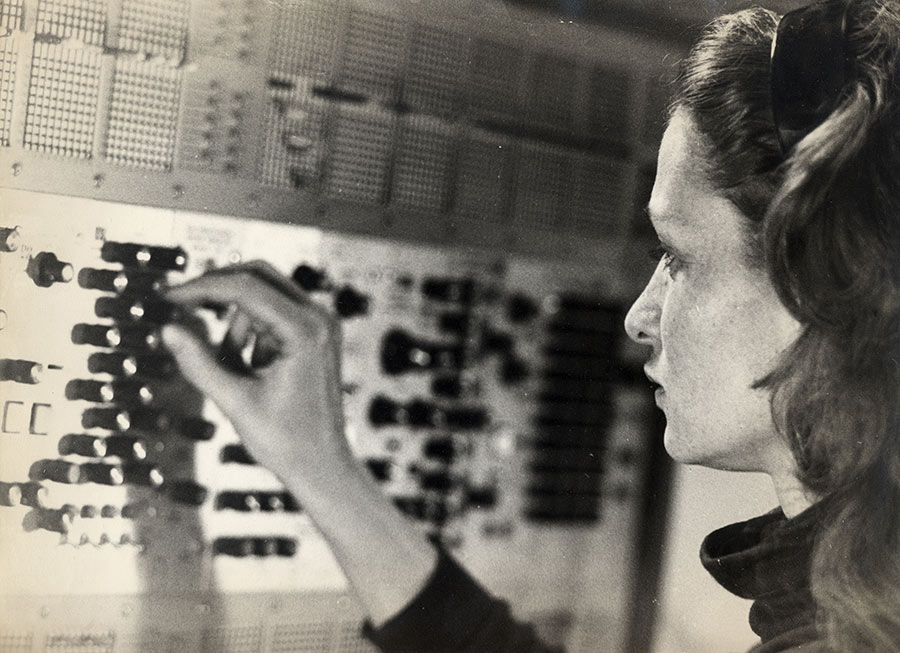
Paris-born Eliane Radigue’s most valued works (the products of an ARP synthesiser, a microphone, and looped tape recordings) saw praise throughout her career for their purity and for their contribution to the realm of sonic works. Hailed “a true original”, her soundscapes communicate moving, spiritual qualities, as though they have the power to transport a listener deep into the heart of sound.
After working at various universities and electronic music studios, Radigue travelled to Tibet in 1975 to explore Buddhism. While this move temporarily halted her creative output, you can hear the effect of her time spent in such quiet, peaceful surroundings, through the restraint and discipline used in the long, meditative drones she has created since.
A pioneer and musical visionary since she first began producing her haunting electronic sounds in the 1960s, Eliane Radigue has created a singular, powerful and unique body of work.
5) CLARA ROCKMORE
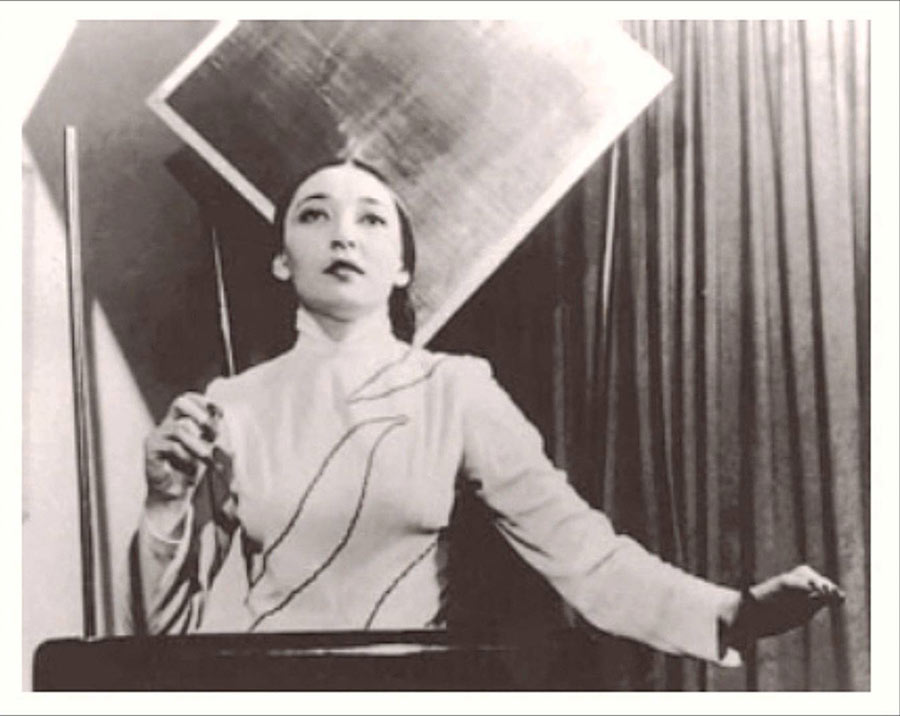
A Theremin virtuoso and innovator, Clara Rockmore excelled in her violin lessons as a child. She travelled to Russia to attend the prestigious Imperial Conservatory of Saint Petersburg at only five years old (she remains, to this day, the youngest student ever to gain admittance to the institution).
In adulthood, however, Clara had to abandon the instrument; she had developed chronic bone difficulties as a result of childhood malnutrition. Contemplative about her creative future, she was led to the electronic Theremin, a new instrument, similar in sound to the violin; a sound she later described as “the saviour of her musical sanity”.
On noting the limits of the original Theremin design (having been accustomed to a violin’s more diverse qualities), Rockmore helped develop the instrument to fulfil her needs. She suggested several improvements to the instrument’s inventor, Léon Theremin—a faster volume antenna, wider musical range, and control over the instrument's tone—which he incorporated in later versions.
6) PAULINE OLIVEROS
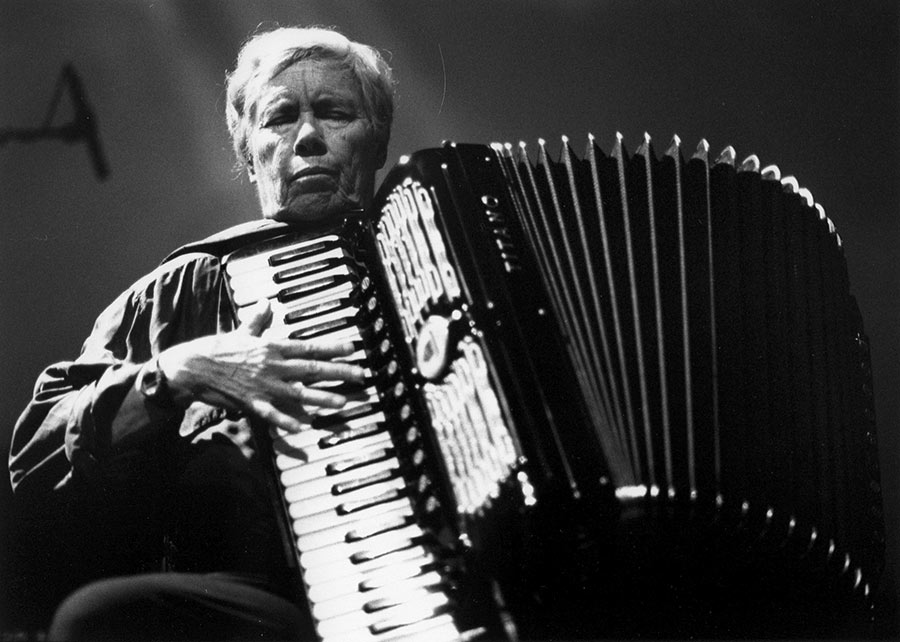
Though she wrote her earliest music using traditional notation, Pauline Oliveros quickly began exploring tape and electronic music techniques. Influenced by her studies of Native American cultures and Eastern religions, her compositions introduced meditative and ritualistic practices while exploring deep, existential ideas.
Oliveros was a central figure in developing electronic art music, and a founding member of the San Francisco Tape Music Center. She has written books; imagined, nurtured and introduced new music theories; and examined new ways to focus attention on music. Most famous of all is her notion of ‘sonic awareness’ and ‘Deep Listening’. Oliveros herself coined the term 'Deep Listening' to describe the discipline of performing and recording in atmospheric, resonant and reverberant spaces such as caves, cathedrals and underground cisterns.
7) LAURIE ANDERSON
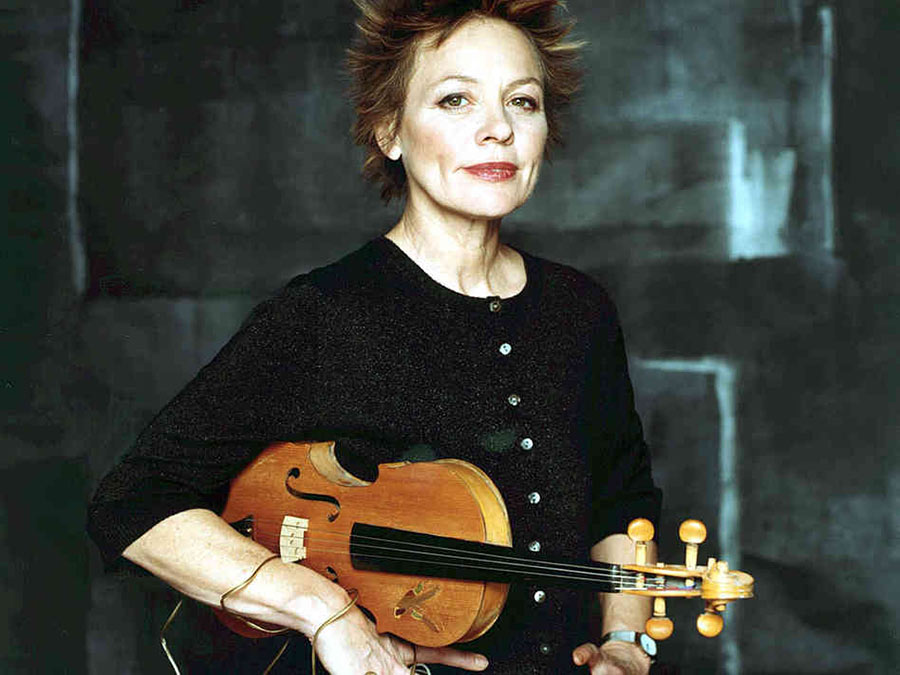
In 1977, Laurie Anderson created a violin with magnetic tape on the bow (instead of the traditional horsehair) and a tape head in the bridge. Although she later got rid of the magnetic tape, and used the bow's contact to trigger audio samples, Anderson’s inventiveness, much like her voice-deepening vocal filter, is a recurring motif in her work.
Along with vocal filters, Anderson had her 'talking stick,' a long baton-like MIDI controller designed to reproduce sounds. She describes it like this:
“*[The Talking Stick is] a wireless instrument that can access and replicate any sound. It works on the principle of granular synthesis – the technique of breaking sound into tiny segments, called grains, and then playing them back in different ways. The computer rearranges the sound fragments into continuous strings or random clusters that are played back in overlapping sequences to create new textures.”The half-sung, half-spoken piece ‘O Superman (For Massenet)’, which makes use of her Talking Stick, unexpectedly rose to #2 on the UK Singles Charts in 1981.
7 Visionary Women Who Paved The Way For Electronic Music Part 2
1) WENDY CARLOS

In 1953, Wendy Carlos won a scholarship at the Westinghouse Science Fair (now the Intel STS) for building her own computer. She was 14 years old.
She met Robert Moog ten years later, at the 1963 AES Convention, and quickly became a supporter of his work. She even suggested improvements to his synthesiser (such as touch-sensitive keys for better dynamic control).
We know Wendy best, however, for producing the first all-synth interpretation of classical music: an album of J.S. Bach pieces performed on a Moog synthesiser. Switched-On Bach both soured the palates of classical purists and captured the public’s imagination. As well as nudging electronic sound into the mainstream (winning three Grammys), the profits allowed her and Rachel Elkind to renovate a space in New York into a home and a recording studio.
2) LAURIE SPIEGEL

Laurie Spiegel’s groundbreaking work with computers in the 70’s and 80’s underpins the practice of many of today's bedroom producers. A curious and resourceful youngster, Laurie made her own early musical experiences; she taught herself the mandolin, guitar, and banjo by ear as a child, and music theory at 20.
After earning her Social Sciences degree in 1967, Spiegel stayed in Oxford and commuted to London to study guitar, theory and composition. She later moved to New York and went on to study composition at the Juilliard School, before moving to Brooklyn College to complete her MA in Music Composition.
With her graphical version of GROOVE (named VAMPIRE), Spiegel's aim was to synchronise the “composed functions of time,” both aural and visual. Instead of producing images to go with prewritten music, as had been done before, the system played sound and image off each other.
“I'd always had a little bit of synaesthesia and would often see colors and textures and shapes in some part of my visual imagination when listening to music. So I was looking for a system that could communicate and share those sensations, using the exact same data to generate the sound and the visuals."Her most withstanding piece of computer software, "Music Mouse”, first emerged in 1986. It automates some aspects of the musical process (like tempo, vibrato, and volume), allowing the user to focus on improvisation and composition. Some of her works composed using the programme include ‘Cavis Muris’ (1986), ‘Three Sonic Spaces’ (1989) and ’Sound Zones’ (1990).
In fact, you can download the software yourself here.
3) BEBE BARRON
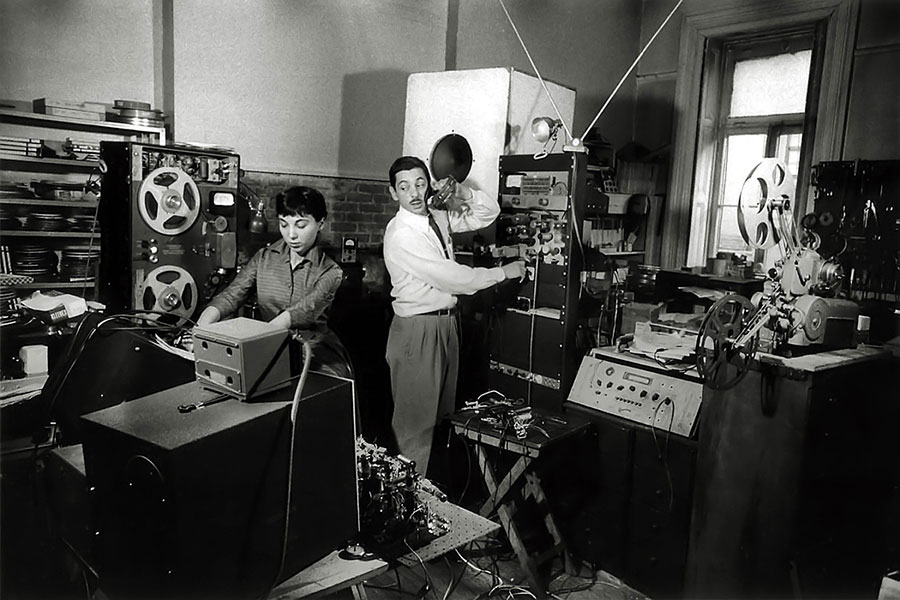
Bebe Barron’s work (with her husband Louis) defines one of the most essential tape music movements in history. A fresh-faced John Cage even produced his first work with magnetic tape (‘Williams Mix’) in their studio, under Bebe’s guiding encouragement. The Barron’s practice of layering manipulated sounds from several different tape machines can be seen today in the multi-tracking practices so fundamental to our recording studios.
Credited with writing the first electronic music for magnetic tape, the couple scored and engineered the world’s first all-electronic film score, for one of science fiction’s most highly regarded films, Forbidden Planet.
In an interview with Jane Brockman, Bebe beamed:
“The preview showing was one of our great experiences because they played the music directly off the magnetic tapes. They had synced up the projector and tape and they gave it so much volume it was embarrassing. It was so effective — they played it stereophonically, which they never did in those days. Then there was the landing of the space ship. That was one of the best cues in the picture — and the audience broke into spontaneous applause.”
4) JESSICA RYLAN
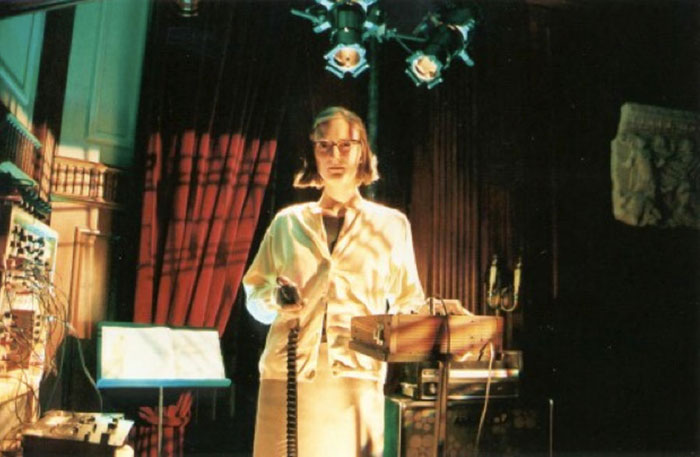
An expert in circuitry, Jessica Rylan engineers and builds modular synthesisers to produce a diversity of sounds. Her synth-creations (see Personal Synth and Natural Synth) took inspiration from 1980s guitar pedals as well as 1960s and 1970s modular synthesisers.
Jessica uses her synthesisers in performances at installations, galleries and music venues, and sells them through her business Flower Electronics. She believes that making your own equipment or sourcing non-mainstream gear creates a more intimate connection to music, and describes her products as ones which “emphasise creativity, utility, durability, and freedom.”
Rylan credits her interest in schematics, circuit-building and electronics to her grandfather.
“[When I was five or six] we made a radio one time, a crystal radio, just the diode, no battery. He hooked this wire to a wire pipe in the ground, and then you’d listen with the earphone…”
~ (from Pink Noises: Women on Electronic Music and Sound, by Tara Rogers)
5) CARLA SCALETTI

Carla Scaletti works as a lecturer at the CCMIX in Paris and is the co-founder of the Symbolic Sound Corporation (SSC).
Kyma, the SSC’s flagship invention, sees recognition for its revolutionary audio manipulation features and user-friendly application. Used by sound designers worldwide, it features in film soundtracks including Wall-E, Finding Nemo, War of the Worlds and Star Wars.
Synth pioneer Bob Moog spoke about Kyma in a report for Keyboard Magazine in 1987:
One new language that acknowledges no distinction between sound synthesis and composition is Kyma, a music composition language for the Macintosh that views all elements in a piece of music, from the structure of a single sound to the structure of the entire composition, as objects to be composed."
~ (from Platypus, Granules, Kyma, Daton, & the DSP56001 in Your Future, by Robert Moog)
6) JOHANNA BEYER
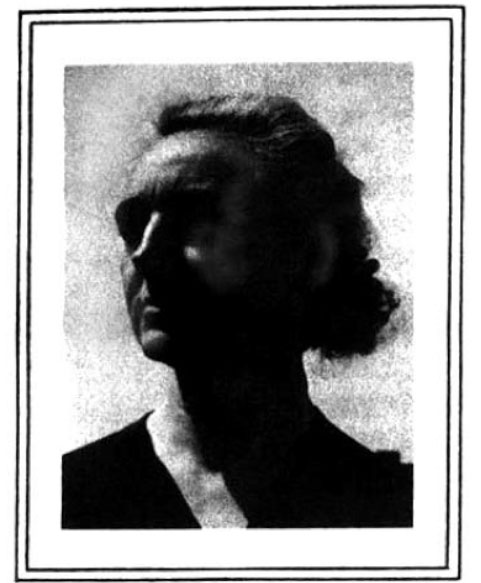
Born in Leipzig, Germany, most of Beyer’s learning and work came in the years following her emigration to the United States in 1923. A humble and passionate artist, she studied at the Mannes College of Music, receiving two degrees by 1928. She developed her skills in percussion (said to be her most fervent passion) at Henry Cowell’s percussion class at the New School for Social Research.
She was involved with the modernist and ultramodernist composers active in New York in the 1930s, a group which included electronic music pioneer John Cage. Cage himself performed two movements of her ’Three Movements for Percussion’ in his tours around the North-West during the late 1930s.
In 1936, her diverse range of skills came together in the ballet-play 'The Modern Composer'. She not only directed the project, but also wrote the lyrics, composed the music (performing its piano part) and choreographed, designed and created the costumes and the promotional material.
Her most famous work, composed in 1938, is the forward-thinking ‘Music of the Spheres’, written as part of a satirical opera entitled Status Quo. The frequency-shifting minimalist score is commonly thought to be the first of its kind written by a woman, though it was overlooked during Beyer’s lifetime.
Experimenting with the Ondes Martenot (an instrument which emerged just a decade earlier), ‘Music Of The Spheres’ was a compositional innovation. It showcased trembling, other-worldly sounds similar to those produced by a Theremin, with eerie oscillations, rolling drones, and wave-like chromatic harmonies (with an inspired triangle accompaniment!)
7) DORIS NORTON
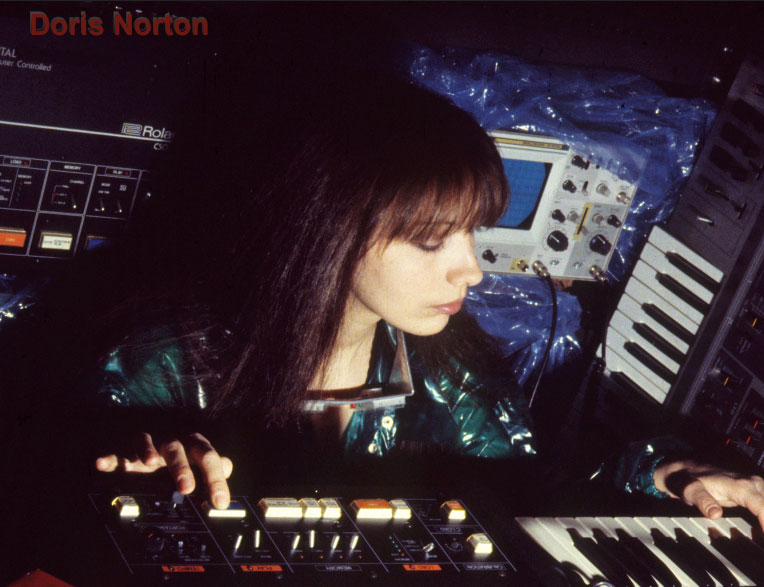
Back in the days when Apple Inc. was a mere seed, the company saw increasing potential in the marriage between computers and music. Spotting Norton’s inspirational vision to combine man, music and machine, Apple (along with Roland instruments) sponsored her debut album 'UnderGround'. This proved to be a catalyst for the career of one of the most important innovators of techno and electronic music.
Her subsequent releases (see: 'Parapsycho', 'Raptus', 'Nortoncomputerforpeace', 'Personal Computer', and 'Artificial Intelligence') saw Norton carving her name deeper into the field of technological and compositional fusion. In 1986, she became a consultant for IBM Computer Music, producing two records for the company: ’Automatic Feeling’ and ’The Double Side of Science’.
She began her musical journey on synthesisers such as Roland System 700, Roland System 100M and Minimoog, and credits her interest in early electronic music to innate curiosities about anthropology, biology, biochemistry and maths. Doris has explained the motivations behind her work, stating:
“In the beginning my main questions were [about] how music has control over biological equipment and [over] matter itself; how [the] brain receives, stores and processes music information and so on. My first solo albums were inspired by research I made on heart-rate sound, brainstorming and electroshock signals, psychic energy and mental phenomena . . . ”
~ (from Psychedelic Baby)
***
Source: 7 Visionary Women Who Paved The Way For Electronic Music Part 1 and Part 2Contact the author
@esperscout and @fig_by_four